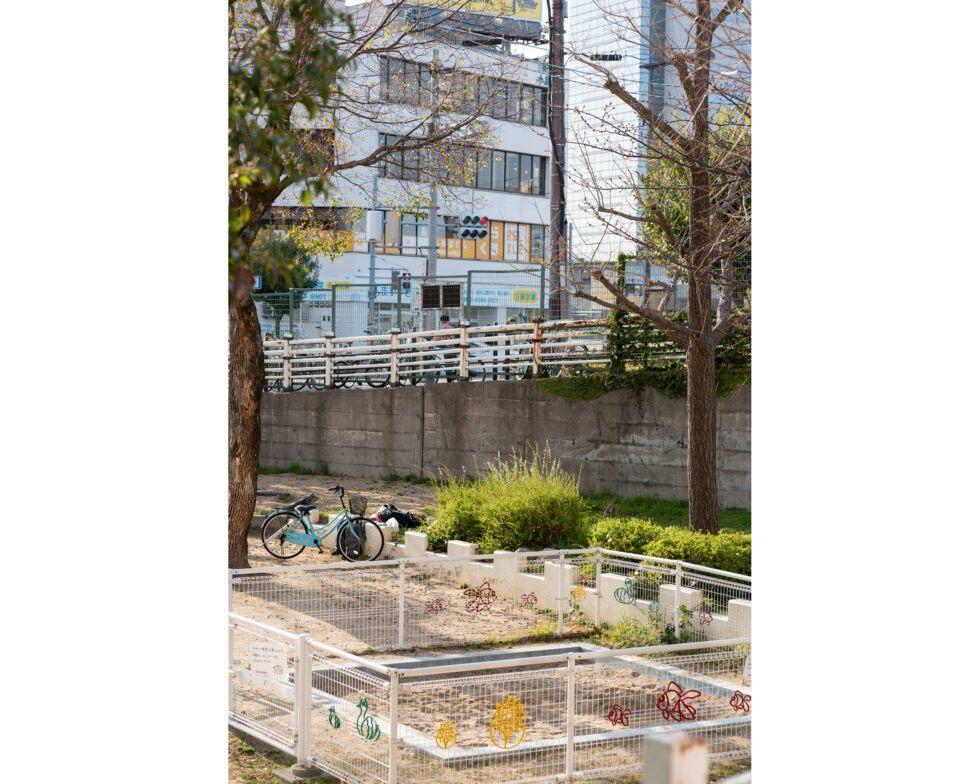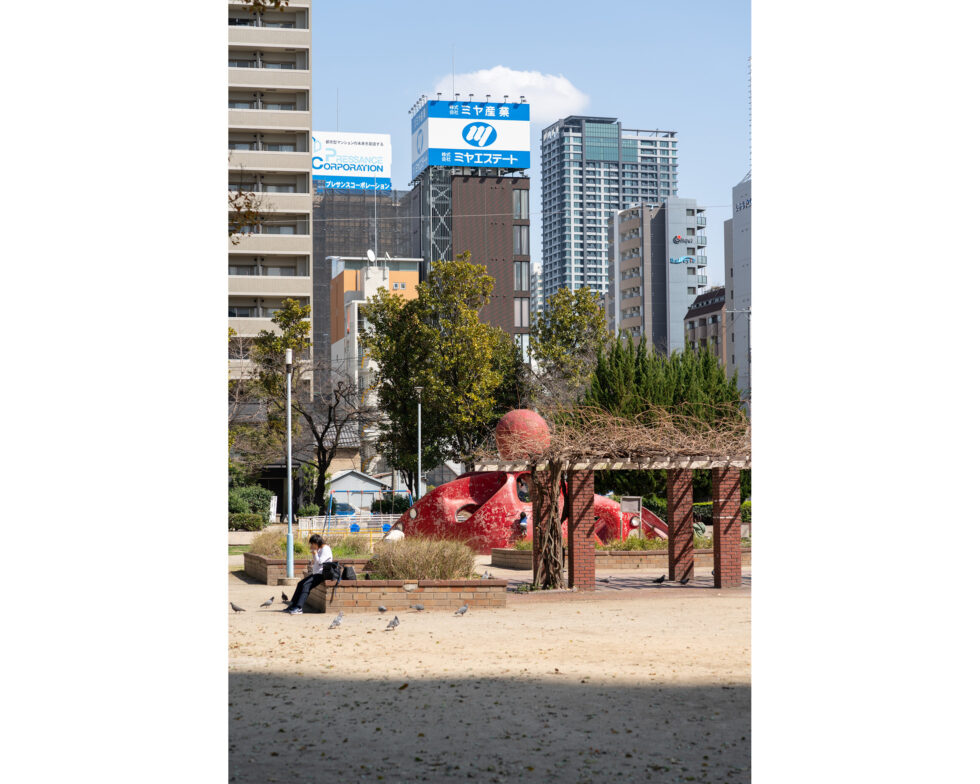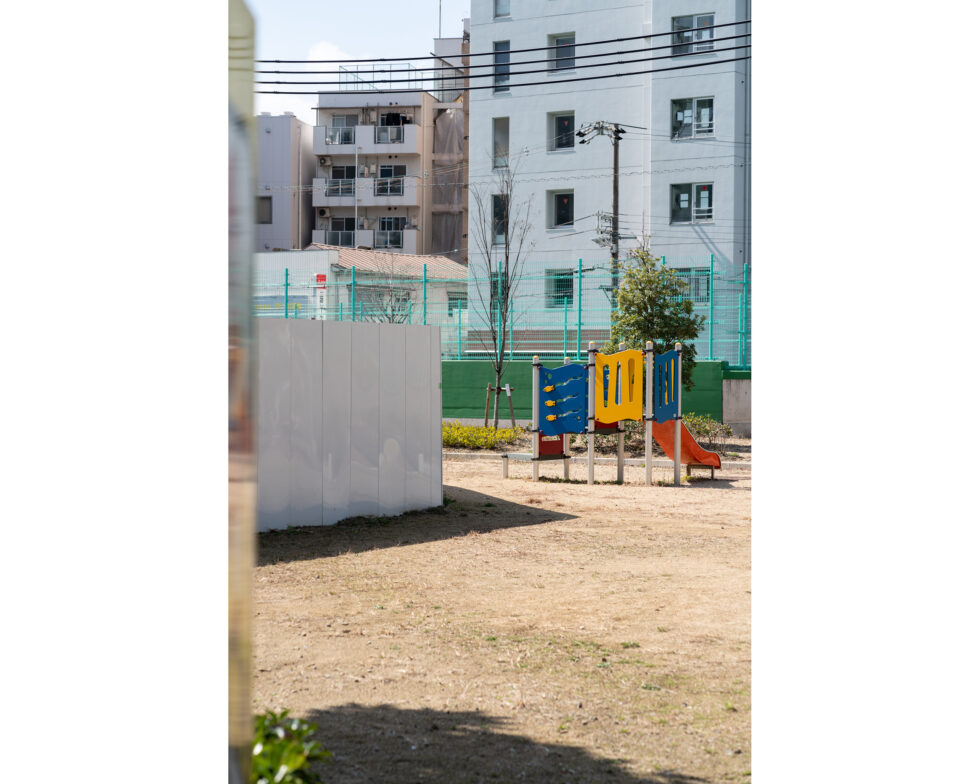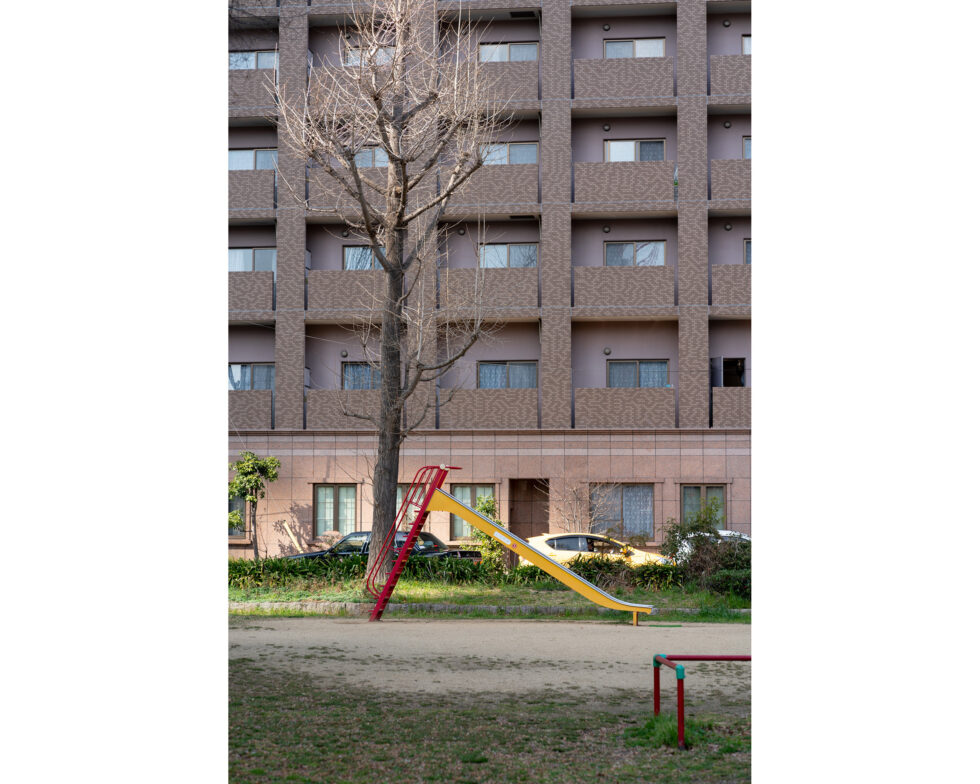マチノニワ|a garden in the city|城市中的花園
私(西川)は大学では造園を学び、造園設計の仕事をしていました。その後、フィリピンに青年海外協力隊員として赴任し、帰国後、写真や映像、デザインの仕事をしています。
これまで、自らの原点である造園、庭園に関連する作品「garden」、アジア(主にフィリピン、台湾)の人々の営みや風景をまとめた作品「DAVAO 1996-1999」、「DAVAO 2019」、「マチハニワ」などを発表しています。
2021年5月に発表した「マチハニワ」(街は庭)は、緑あふれる台湾の街の光景を、人が無意識に創り上げた「庭園」と見立てた作品でした。今回は、日本の都市部の公園に着目し、「マチノニワ」(街の庭)と題し、作品を発表します。
作品説明
「公園」は「public garden」を直訳したもので、明治初期にできた言葉と言われています。日本に最初の公園が出来たのも明治初期で、まだ150年足らずしか経っていません。元々が西欧文化である公園は、その後、日本人の文化、生活に馴染んでいったのでしょうか。「一般に開かれた庭園」である「公園」は、「街の庭」(マチノニワ)となっているのでしょうか。
公園(都市公園)のうち、一番身近なものが「街区公園 *1参照」(以前は児童公園と呼ばれていました)です。都市部であれば、徒歩圏内に一つ二つは街区公園があります。多くは、広場やベンチ、屋根付きの簡易休憩所、ブランコ、すべり台、砂場などの遊具があります。
しかし、公園(街区公園)の使われ方は、場所や使う人によって様々です。ファミリー向けの集合住宅が多いところでは、就学前のお子さんを遊ばせているのを見かけますが、オフィス街では、サラリーマンやタクシードライバーの休憩所、喫煙所となっています。幹線道路沿いなど、平日の日中は人が全くいない公園もあります。
今回の写真展では、都市部の構造物(建築物、高架道路)の中に溶け込む、あるいは埋没している公園を写し取り、公園が日本人にとって「マチノニワ」(街の庭)となってるのか考察していきたいと思います。
*1 街区公園(以前は児童公園と称していた)は、一番身近で小規模な都市公園(都市公園法に定められた、国または地方自治体が設置した公園)で、「もっぱら街区に居住する者の利用に供することを目的とする公園で、誘致距離250mの範囲内で1箇所当たり面積0.25haを標準として配置する(現在は、誘致距離標準は廃止されている)」とされています。
関連展示
西川善康写真展「マチノニワ」
会場:gallery 176 (ギャラリー イナロク)
大阪府豊中市服部元町1-6-1/阪急宝塚線 服部天神駅(梅田から11分)下車 徒歩1分会期:2022年5月6日(金)〜5月17日(火)
休廊日:5月11日(水)、12日(木)
開廊時間:13:00〜19:00
Artwork Description
”公園 kouen / park” is a literal translation of “public garden” and is said to have been coined in the early Meiji period (1868-1912). The first park in Japan was established in the early Meiji period, less than 150 years ago. Did the parks, which were originally a part of Western culture, fit into the culture and lifestyle of the Japanese people? Have “parks”, which are “gardens open to the public”, become “a garden in the city” (machi-no-niwa)?
The most familiar type of park (urban park) is the “gaiku kouen / children’s park”. In urban areas, there are at least one or two children’s parks within walking distance. Most have a plaza, benches, swings, slides, sandboxes, and other playground equipment.
However, the use of the parks (children’s parks) varies depending on the location and the people who use them. Where there are many family-oriented housing complexes, you may see pre-school children playing there, while in office districts, they serve as resting and smoking areas for office workers and cab drivers.
In this book “a garden in the city”, I would like to photograph parks that are blended or buried in urban structures, and examine whether parks have become “a garden in the city” for the Japanese people.



